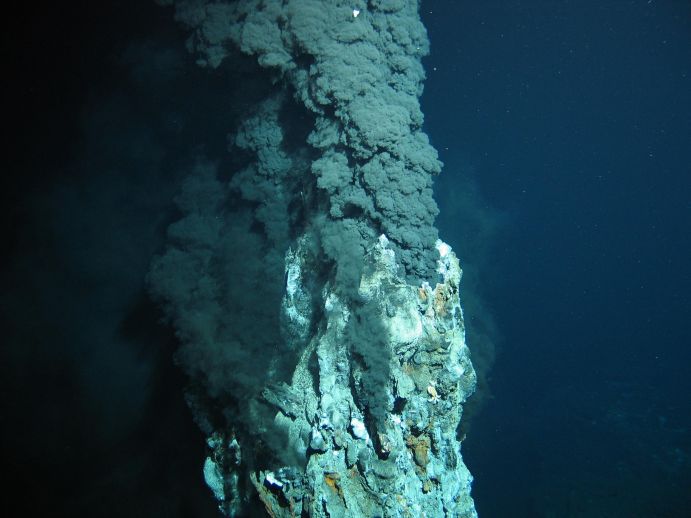Science demands protection for active black smokers - Kiel marine scientists discuss regulations for future deep-sea mining in London
In addition to manganese nodules in abyssal plains, ore deposits around hot vents on the seabed are among the potentially economically interesting metal deposits in the oceans. This week, members of the International Seabed Authority (ISA) met in London with representatives from countries, industry, environmental organizations and research to discuss future regulations for marine mining. Scientists from the GEOMAR Helmholtz Centre for Ocean Research Kiel also took part in the meeting. Furthermore, they argue in the international science journal Marine Policy for the protection of active hot vent sites, the so-called black smokers.
On invitation of the Royal Society and the ISA representatives of industry, academia, non-governmental organizations and politics met this week again to discuss the current version of the Mining Code in London. The marine scientists Dr. Sven Petersen and Dr. Matthias Haeckel from the GEOMAR Helmholtz Centre for Ocean Research Kiel attended the workshop. These meetings are always useful to collect and discuss all the different views create a general understanding, says Dr. Haeckel, 53 institutions, as well as individuals have commented on the recent draft. Now, we are curious to see how the ISA will implement our suggestions.
For a long time the two GEOMAR scientists have been working intensively on the topic. Dr. Sven Petersen is a member of the Marine Mineral Resources working group and recently published an article in the journal Marine Policy with 12 co-authors from around the world, demanding protection for all active black smokers. Black smokers are hot vents in the deep sea, where up to 400-degrees hot water seeps out, enriched with various metals. These metals deposit around the hot springs grow over time. This is why such metal enrichments, but especially larger inactive deposits, have become the focus of attention as potential suppliers of raw materials, explains Dr. Petersen.
As long as these resources are active, they also host unique ecosystems. Thus, due to the rather low raw material potential of the active vent sites themselves, they should be excluded from mining in the Mining Code, adds the geologist.
Dr. Matthias Haeckel coordinates the European project MiningImpact. The aim is to investigate the environmental consequences of industrial mining of manganese nodules in the deep sea. In January, he and his colleague Prof. Dr. Antje Boetius from the Alfred Wegener Institute Helmholtz Centre for Polar and Marine Research published a summary of the project results in the journal Science, from which they derived their recommendations for the mining code. Among other things, we have found out that the diversity of life in the deep sea is significantly greater than assumed. Protected areas in the manganese nodule fields would have to take this variety into account, emphasizes Dr. Haeckel.
The results of the second commentary on the Mining Code will be presented at the ISA's next council meeting in March. It will take some time before the regulations are finalized. We will continue our efforts to incorporate the latest scientific knowledge in the development of the mining code, Dr. Petersen states.
Van Dover, C. L., S. Arnaud-Haond, M. Gianni, S. Helmreich, J.A. Huber, A.L. Jaeckel,
A. Metaxas, L.H. Pendleton, S. Petersen, E. Ramirez-Llodra, P.E. Steinberg, V. Tunnicliffe,
H. Yamamoto (2018): Scientific rationale and international obligations for protection of active
hydrothermal vent ecosystems from deep-sea mining. Marine Policy, 90 , 20–28, https://doi.org/10.1016/j.marpol.2018.01.020
Boetius, A., M. Haeckel: Mind the seafloor. Science, 359, 6371, pp. 34-36, http://dx.doi.org/10.1126/science.aap7301





